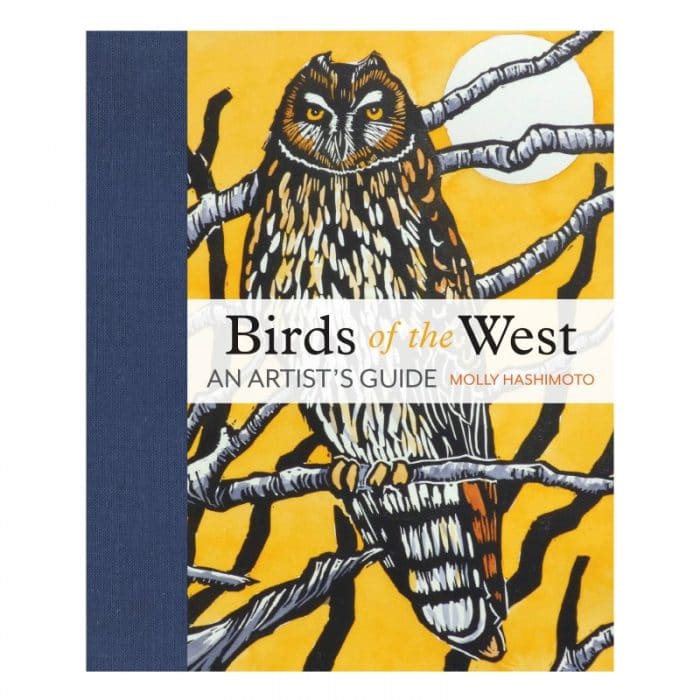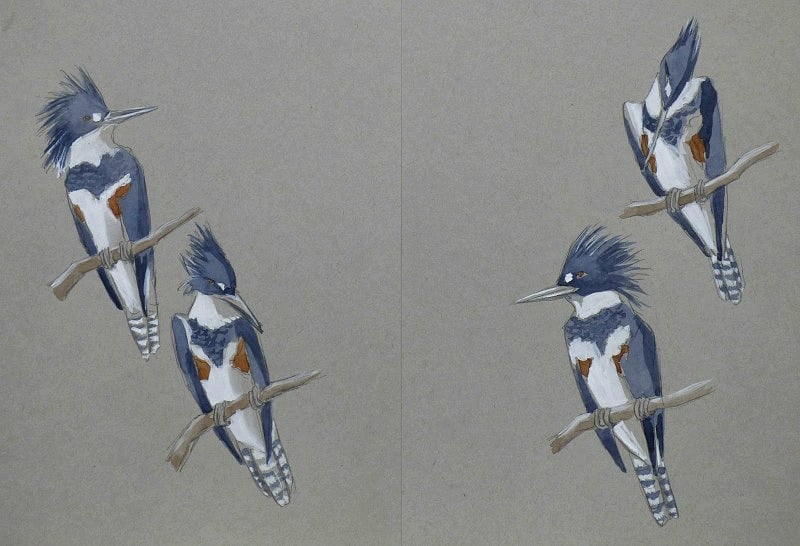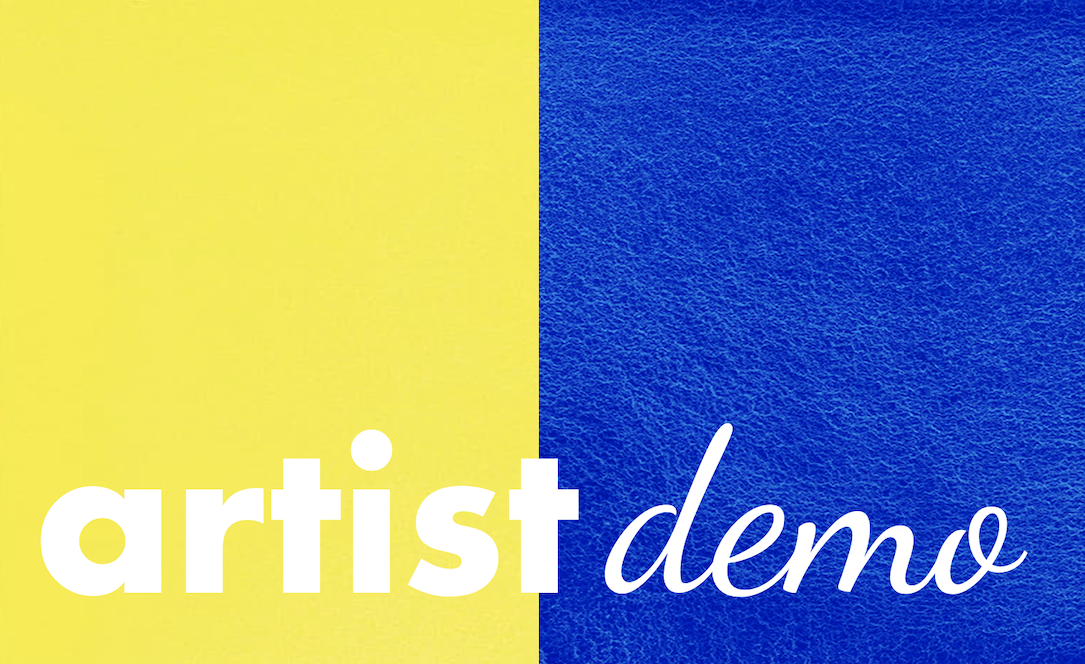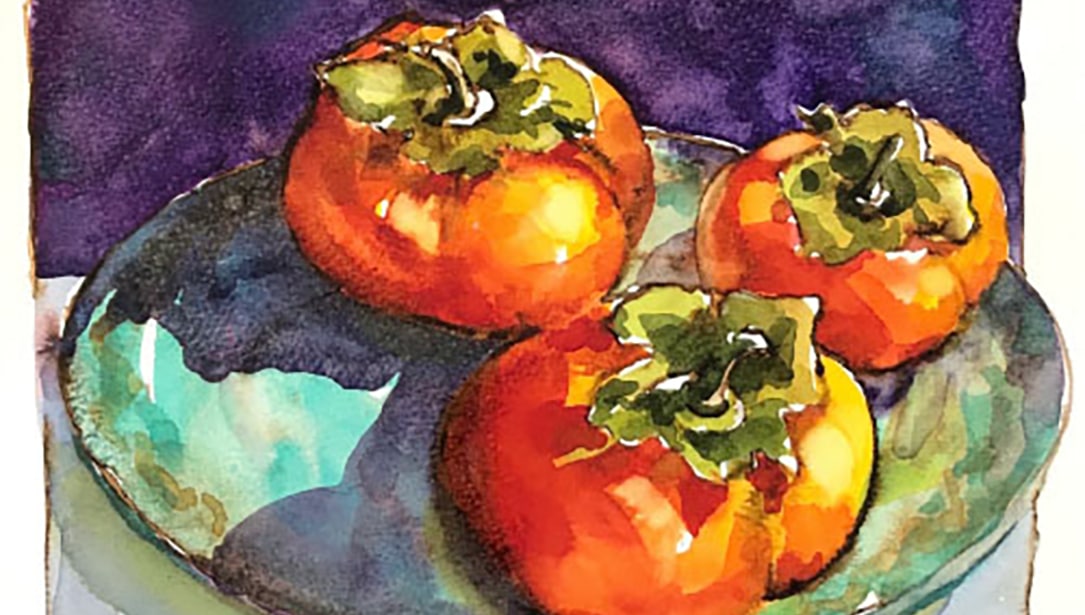In my book, Birds of the West: An Artist’s Guide, I share over 130 drawings, paintings, and prints that I’ve created over many years of birdwatching in the western United States. The book is organized by habitat and includes birds from the backyard & city, wetlands, shoreline, desert and sagebrush steppe, forest and alpine. The book includes many tips, techniques and demonstrations for artists. This is one of my favorites – sketching on toned paper with pencil, watercolor and white gouache.


My subject is a female belted kingfisher (Ceryle alcyon) that I observed in a wetland park near my home in Seattle. I take a lot of photos of birds because they can be quite difficult to sketch from life, and I’ll usually synthesize photos to create my art once I am back in my studio. Often when I see kingfishers, they fly off quickly, as they don’t really like being watched. But this time the kingfisher stayed put in a large tree, changing her head position but little else as she peered intently at the water. It was a very rare experience, as I managed to get several interesting photos of her. I decided to honor that experience by sketching four of the poses in my gray-toned sketchbook. Why so many? Why not just stick with one? I wanted to convey the delight I experienced while watching her. Including four sketches gives a sense of her movements, gestures and a feeling for the living bird.

Pencil sketch
When drawing birds, it helps to think of shapes – first look at the body and head. The body and head of the kingfisher are both kind of like long triangles. Hold the pencil lightly when you sketch—that way you won’t feel so committed to the line. I break it up into many short segments, rather than gripping tightly and feeling as if every mark I make on the paper has to be perfect. You can always erase extra lines, though they do add a sense of energy to a sketch. The gray toned paper I used is from a 150 gsm mixed media sketchbook.

Decide on a palette
Assemble your palette and try out colors. I decided on Indanthrone Blue, Phthalo Blue (Red Shade), Carbazole Violet, Quinacridone Burnt Orange and Pyrrol Orange.

Light values
Mix paints for the blue/gray feathers – Phthalo Blue (RS), Carbazole Violet and Quinacridone Burnt Orange. I chose these pigments because they are strong hues that mix beautifully and do not granulate. The textural quality of granulating pigments is not desirable for creating the hues of kingfisher feathers. On smooth and hot press papers, watercolor tends to puddle. Try not to load your brush up too much, but if a puddle does form, use a brush to lift out the excess.

Add darker values
Strengthen the values on the blue and gray. Mix up the same colors as the first wash, plus a little bit of Indanthrone Blue. Be sure to add less water to increase the value’s contrast. Now you will have two values of the blue and gray.

Add the warmer tones
To add rust colored markings and a branch, mix Quinacridone Burnt Orange plus a little bit of Pyrrol Orange. Add a small amount of the blue/gray mixture you have been using in order to tone down the orange. To achieve the branch color, just add even more of the blue/gray mixture for a very neutral brown hue. Wipe out a little of the brown to keep the upper part of the branch illuminated.

Bright touches
Now add the white gouache mixed with a small amount of water. Be sure to leave some of the toned paper unpainted, as it will serve as the shadowed area on the bird and will help to model the form. You can dampen your brush and shade out the white paint if you want a more subtle gradation, but it isn’t necessary as this is just a sketch! Keep the gouache very saturated – if it’s too white, you can always dampen it to lift it out, but if it’s too diluted and watery, it will simply disappear into the paper once it dries.

Final touches
Check to see that there is still a good value contrast. Use a white pen for small details that are harder to achieve with a paintbrush, such as the highlight in the eye and beak or the tops of the individual toes. If necessary, add more darks to dark areas. For darkest grays, a mixture of Indanthrone Blue, Carbazole Violet and Quinacridone Burnt Orange yields a color close to black.








